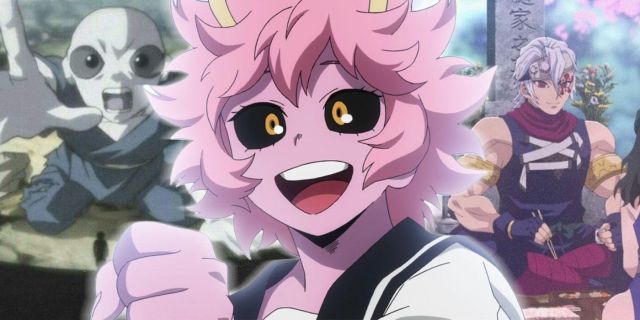Every anime fan has seen it before: a thrilling battle where people are injured, bleeding, possibly even missing limbs, when suddenly, the flow of the episode is interrupted by a flashback. Sometimes this is a scene only a few seconds long of a moment that’s already been shown in the anime previously, while other times, this sequence can go on for half the episode to reveal a completely new backstory for that character.
Regardless of the many different ways it can be used, the flashback is a staple storytelling device in anime, and it’s particularly common in shonen titles. While flashbacks can serve to establish character motives or provide backstories to underdeveloped characters, they can also be intrusive and prevent viewers from becoming fully invested in the show they’re watching. Given the latter, just why are flashbacks employed so often throughout anime, and what unique purposes do they serve for titles to justify the extent to which they appear?
Flashbacks Are Frequently Used as Filler in Anime
The most typical and sometimes most irritating use of flashbacks in anime is when they depict an event that the audience has previously seen. This is seen in almost every anime of any genre or demographic, most frequently occurring when a character hears or sees something that triggers them to remember a scene from a past episode, or sometimes even a scene from earlier in the current episode. While these flashbacks are usually quick flashes of dialogue, they can sometimes stretch out for longer depending on why the character is remembering their past.
These kinds of flashbacks can be useful if what the character is recalling is something that the audience has also forgotten, but more often than not, they can feel like filler that’s used to pad out an episode’s runtime rather than a narrative tool that actively improves the flow of a scene. At its worst, an anime flashback feels like it’s included because the writer doesn’t trust in the audience’s intelligence and ability to connect any emotional dots that aren’t immediately displayed in front of them.
This is a legitimate justification for the usage of filler flashbacks to some extent. Flashbacks to earlier episodes are a surefire way to ensure that the audience understands what is happening in most anime, especially shonen action ones that are geared for a young audience. For financial reasons, filler flashbacks are often helpful. Flashbacks are a simple fix if an episode ever runs short of the allotted time because they are already animated and voiced.
Of course, even if the flashbacks don’t include any new information, they might help to increase the emotional tension of a scene. Few things get the viewer’s heart racing faster than seeing the protagonist on the edge of losing get a quick flashback to their dying mentor’s final words, which suddenly enables them to power up to tackle the task after all. These flashbacks, however, must be well-placed, and the rhythm of a scene must be developed around them in order to be non-intrusive while actively raising the emotional stakes.
Are Anime Flashbacks Used Too Much for Backstory?
Another way flashbacks are used in anime is to reveal the backstories of characters who have either been shrouded in mystery or underdeveloped up to that point. Good examples include Jiren in Dragon Ball Super and Tengen Uzui in Demon Slayer. These flashbacks tend to be multiple minutes long, and in some cases can even take up most of the episode. Whenever a character is about to have a big moment for themselves in the story, a flashback that shows how they got to where they are now is an easy method to make the viewer’s investment in the character grow.
Whether this usage of the flashback is overdone depends once again on how effectively it’s woven into the pacing of the episode, as well as how common this style is to the anime in question. My Hero Academia, for example, makes the backstory exposition flashback a major feature of its storytelling format. Whenever a new character is introduced who is given significant screen time, there’s a good chance they’ll receive their own flashback sequence at some point in the near future.
When a flashback is overly predictable, it loses some of the emotional impact it was intended to produce and instead appears to be a facile technique to flesh out a character. A solid anime flashback may still strike the proper beats and drag the viewer into the action when utilized sparingly and especially for a character whose background may be radically different from what the audience imagined. The effectiveness of any anime flashback, like any storytelling device, is determined by how it is used above all else.















Leave a Reply